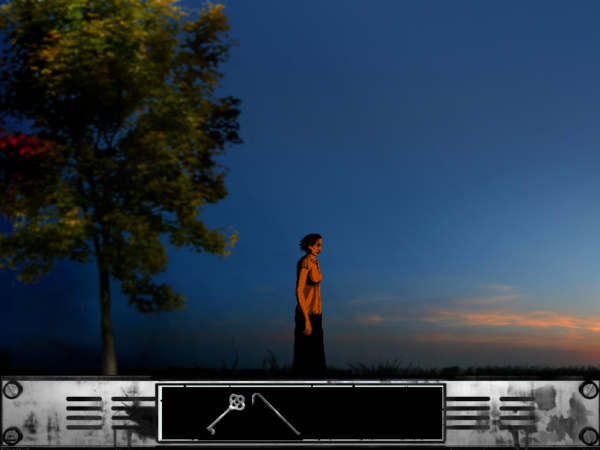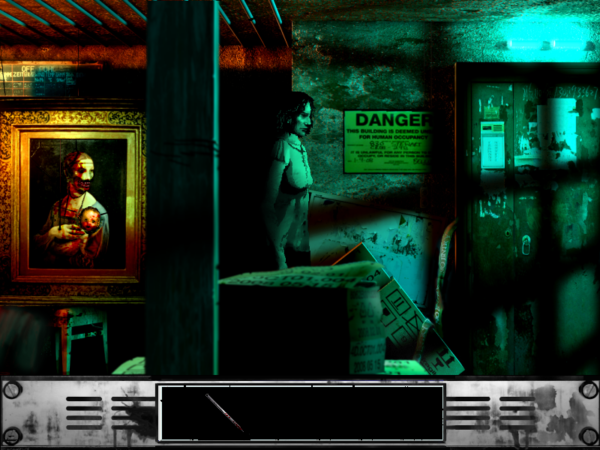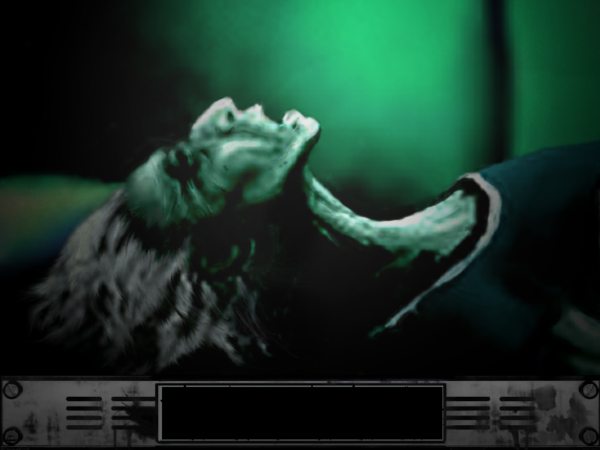Redemption with The Cat Lady
Back in 2009, I started writing out my thoughts on games as a way to alleviate some stresses and to satisfy a growing need to expand my creative horizons. Also, I was simply bursting to talk about the games I was playing, and adult life comes with certain constraints—these days it’s not unusual for my gaming discussions with friends to be limited to huddling in the kitchen of someone’s house at a party.
Putting thoughts online seems much like adding another drop into a vast ocean but the internet is an odd thing. Sometimes people, who are not your family and friends, find your stuff even if you’re just some guy writing half-formed game reviews.
I tend to play games made by small or indie developers since, lately, that strata of games development is leading the industry in creative and innovative work. Finding real-life other people to talk to about these lesser-known works is even harder than usual by virtue of their limited marketing reach and simply because of varying tastes in games. Thus, if I get the time, I try to write a post about a game I particularly wanted to talk about, ranting and raving about the things I loved and hated about it.
Sometimes I’m bothered that my posts are predominately love letters to games, but since I do this as a hobby, that’s just how things tend to happen. I’m not writing on assignment so if I don’t like a game, I just stop playing. It’s rare that my frustration with it will cause me to find the time to write. Sometimes, awkwardly, during those few occasions when I’m pushed to write about a game out of dislike, I also tend to reach a point of indecision. It always feels weird criticizing indie games. By definition they tend to be created by only one or a few people, who presumably did the best they could without a lot of resources to support them. Making things even more muddled, their creators have a distinct voice shared through development blogs and Twitter feeds that give the game a face, a personality, which you rarely meet with large, professionally produced work. I don’t want to hurt people’s feelings, especially when a game is not far from being the product of someone’s hobby. But then again, why not discuss how I feel? I’m just some dude on the internet.
My first negative post about a game came in the early days of this blog when I wrote about a game called Downfall, an adventure developed by Harvester Games. The game’s art was strikingly dark and dramatically twisted, and that was enough to get me to buy it. I’ll let that post explain but my feelings on Downfall can be summarized as, “I hate it. It is so damned disappointing.” The game’s art, the music, even some of the broad plot points were amazing, but the writing was excruciating to experience. I couldn’t even finish the game. I wrote angrily, ranting about its squandered potential.
Much later a trailer surfaced for Harvester Games’ new game, The Cat Lady. Once again I was enthralled by the creator’s dramatic art and ability to put together a powerful presentation. When the actual game was eventually released I purchased it with a little apprehension, worried that I hadn’t learned my lesson from Downfall.

The Cat Lady follows the suicidal Susan Ashworth, a woman living alone and suffering from crushing depression. The game’s title is a little misleading as it calls upon a certain archetype of a crazy woman constantly surrounded by nearly feral cats; Susan’s cats are more of a representation of her tenuous connection to a wider world. She feeds neighborhood strays that come to her porch when she decides that she wants contact with other living creatures.
We meet Susan Ashworth at her end, when she kills herself. After her death, she drifts through a surreal limbo and meets a being who forces a second chance at life on her, a deal she can’t refuse despite her desperation to no longer be alive. Susan’s return to life isn’t celebrated with bright sunshine and clear skies, but with the forced obligation to find and destroy “parasites,” evil people who feed on and destroy humanity.

The Cat Lady is full of graphic horror and scenes of pulsing, writhing insanity using a style that is seemingly borne from a serial killer’s basement art project—sort of a Monty-Python-era Terry Gilliam animation on bad mushrooms. Susan Ashworth dies and dies again in horrific fashion while facing barely-human monsters and traversing surreal landscapes as her second life continues the downward spiral of her first.
Susan Ashworth has lost control and in the most painful fashion imaginable, she’s being forced to take it back. Broken and resigned, she faces all of the cruelty and barbarism humanity has to offer, while shielded, just a little, by the fact that she can no longer be permanently killed. She can repeatedly rise to exact vengeance, each time, perhaps, contributing to the building of a new Susan Ashworth.

The Cat Lady often offers a choice of responses in conversations in the game and I readily found myself role-playing as Susan, tired and resigned at first, defiant and strong in the end. For the most part, there were only a few tonal missteps in the game’s dialogue—Susan would sometimes give a flippant remark while despairing only moments before. I enjoyed the story The
Cat Lady had to tell and most of the misgivings I have about the game are perhaps borne from what I was projecting onto it—I very much wanted Susan Ashworth to cast off her depression and rise up as a powerful avenging being, but that’s not the story that was told, and that’s completely okay.
I very much liked The Cat Lady, though I was prevented from being completely engrossed in it thanks to some severe game crashes. At multiple points along the way the game completely froze, which was especially painful at times since I hadn’t thought to save my progress in quite a while— the first time it happened, I had to replay more than an hour’s worth of the game. Several impactful moments in the game were lessened by having to click through them more than once, and by the fifth such crash I had long learned my lesson and was saving my game state constantly. That meant I had to keep one foot in reality in order to remember to regularly mark my progress, which ultimately prevented me from being completely immersed in The Cat Lady’s story. There were a few more bumps along the way but they were nothing a little more testing couldn’t have fixed—such as in one confusing instance when I unknowingly solved one of The Cat Lady’s puzzles out of order and the game wouldn’t recognize that happenstance.
Supported by a fantastic soundtrack and by surprisingly well-cast voice actors, especially the actor who voices Susan Ashworth, The Cat Lady tells a thrilling and interesting story. One of the great things about playing indie games is that since their developers tend to be one or just a few people, you often get to witness up close their game-making maturation. The Cat Lady is a fine example of that positive growth. This developer already possessed the superior design skills needed to a give a powerful presentation and this time around their writing showed a clear and nearly constant vision which in turn created highly defined and motivated characters. Despite some mechanical frustrations along the way, I wanted to see The Cat Lady to its end and these days when I don’t have a lot of spare time, and when I have no qualms with abandoning games that don’t hold my attention, it means that this game was something special.


